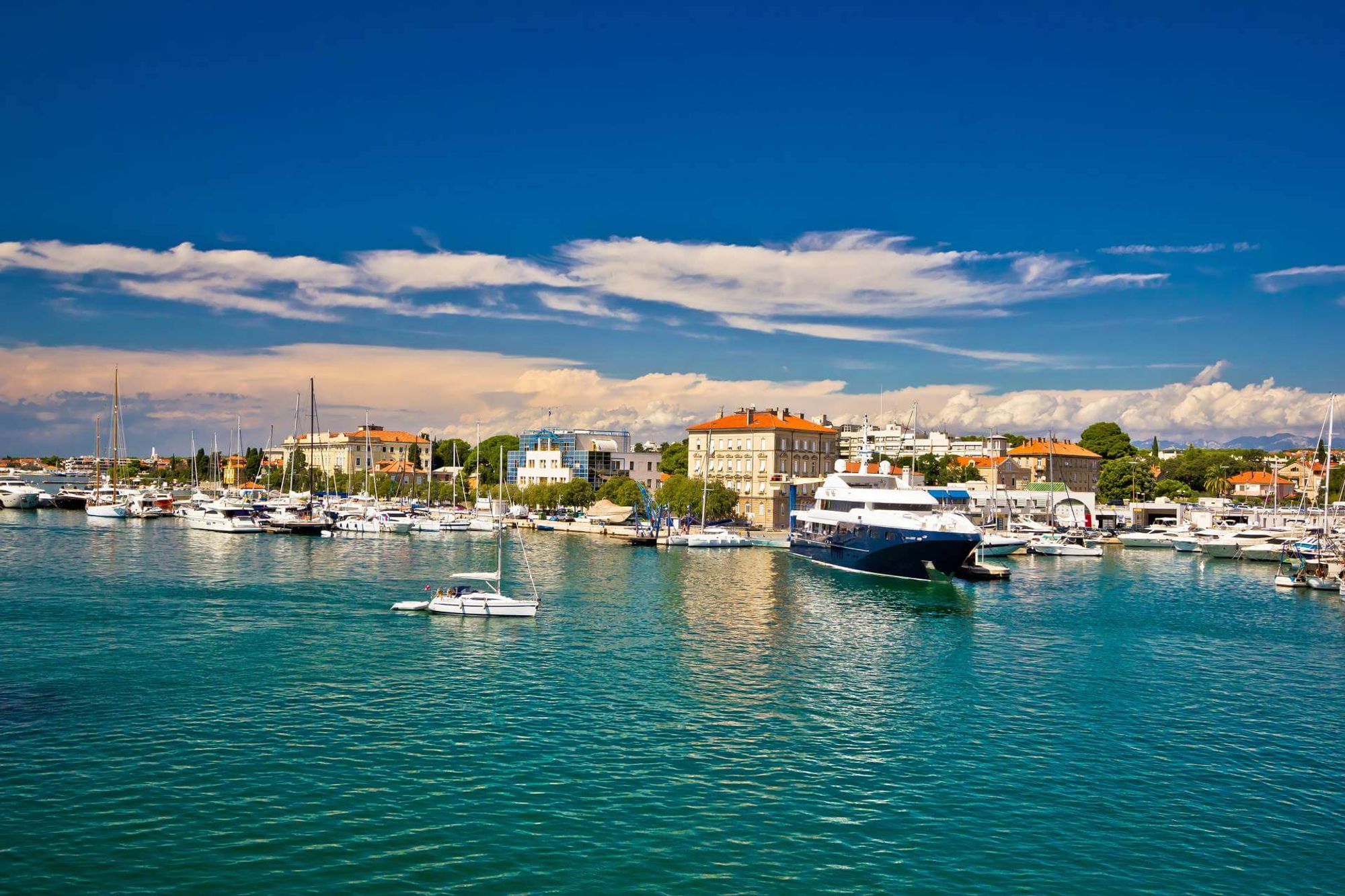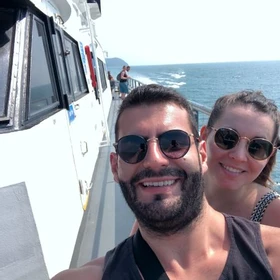About the ride from Plitvice Lakes to Zadar
Besides having the prestige of being a UNESCO World Heritage Site, Plitvice Lakes also holds the title of the most popular natural attraction in all of Croatia. And that’s saying a lot!
This collection of waterfalls and travertine pools set in a deep green forest is the stuff of fairy tales. But Croatia’s appeal goes a lot deeper than that.
Along the coast are ancient cities, like Zadar, where culture and history are on full display.
Zadar is a quintessential city along the Dalmatian Coast, with cobblestone streets, a historic Old Town and lots of natural beauty.
Fortunately, getting from Plitvice Lakes to Zadar as an independent traveler is as simple as taking a quick bus ride.
Four top attractions in Zadar
While many tourists opt for larger cities such as Split and Dubrovnik, Zadar can certainly hold its own when it comes to attractions.
Here are some of the top things to do in Zadar:
Take in a natural concert at the Sea Organ. Stretching along the waterfront is a promenade of marble steps. Beneath the steps — and the waterline — is a series of organ pipes. As the waves lap against the shore, sounds are produced, creating a unique “symphony” that varies according to the tide.
This one-of-a-kind attraction is definitely worth seeing — and hearing.
Explore Roman Zadar. With a history going back to the Roman Empire, Zadar’s Old Town is dripping with character.
Top attractions include the Church of St. Donatus and its bell tower, the Museum of Ancient Glass, and the Archeological Museum near the city center. The latter traces the city’s transformation over the centuries and gives you a sense of the history that has passed through this corner of the world.
Greet the sun after dark. On the western edge of the Zadar Peninsula, you can enjoy another unique gem—Greeting to the Sun. This is a large circular inset on a wide stone plaza made up of glass panels that absorb the sun all day and produce a light show at night.
The large circle represents the sun, and smaller circles of the same material stand in as the planets. While you can visit during the day, its full beauty is best visited once the sun has gone down.
Go see some of Croatia’s other national parks. While Plitvice Lakes is without doubt the star of Croatia’s natural attractions, other national parks showcasing the country’s beauty are just a short ride from Zadar.
In less than an hour’s drive, you can admire the cliffs and rock formations of Paklenica National Park.
You are also within striking distance of Krka National Park, which offers more waterfalls and forests in a scenic mountain valley.
What can you expect when traveling from Plitvice Lakes to Zadar?
The shortest route between Plitvice Lakes and Zadar is approximately 81 miles (130 kilometers). Starting from the national park, the ride will take 1.5 to 2.5 hours of drive time, depending on the operator you choose.
The route will take you through the deep green, forested mountains of interior Croatia for most of the trip.
Eventually, things will flatten out and become rockier as you approach the coastline.
Zadar’s Old Town sits on a peninsula alongside the Zadarski Channel, with a line of barrier islands strung out in front of it. Overall, it’s a lovely backdrop for your exploration of the coast.
How to get from Plitvice Lakes to Zadar
Unless you’ve rented a car or decided to hitchhike, taking a bus is your only practical option for getting from Plitvice Lakes to Zadar. Fortunately, this is a comfortable and quick ride that will allow you to relax and take in the scenery.
By bus
Bus service from Plitvice Lakes to Zadar will be on a comfortable motor coach, with air conditioning and possibly WiFi (depending on the operators).
Departures are limited and vary with the season. The deeper into the high season (summer) you get, the more buses make the journey. Keep that in mind if you decide to travel in the shoulder or slow seasons.
The price for a one-way ride from Plitvice Lakes to Zadar by bus is around $15, which is quite reasonable. It is most definitely worth the price of being able to sit back and enjoy the 1.5-hour ride.
Small bags can be placed in the overhead racks inside the coach. Larger bags must go in the hold and could potentially cost a small fee. Keep some change handy, just in case.
Buses leave right from Plitvice Lakes National Park and arrive at the Zadar Bus Terminal, not far from Old Town.
When is the best time of year to visit Zadar?
Spring and fall are the best seasons because you can enjoy generally warm weather without the crowds that descend in summer.
Summer can be very hot and crowded, but the city will be abuzz with activity if that’s your vibe.
Winter is fine for sightseeing, though a trip to area beaches won’t be very appealing. You will also get lower accommodation prices with barely another tourist in sight.
But remember, bus and ferry services are far more limited outside the peak (summer) season.
How much time do I need in Zadar?
It is possible to cram a visit to the Old Town, the Sea Organ and Greeting to the Sun in one day.
But to really soak in the vibe, explore the charming backstreets and maybe even take in one of the other nearby national parks, you’re better off setting aside two to three days to do it right.
Where should I travel after Zadar?
You have no shortage of options to explore within easy reach of Zadar.
If you haven’t gotten there yet, the historic cities of Trogir and Split are just a few hours away.
And for a slightly different, more Italian flavor, the city of Pula, with its intact coliseum, makes for a great next destination.












